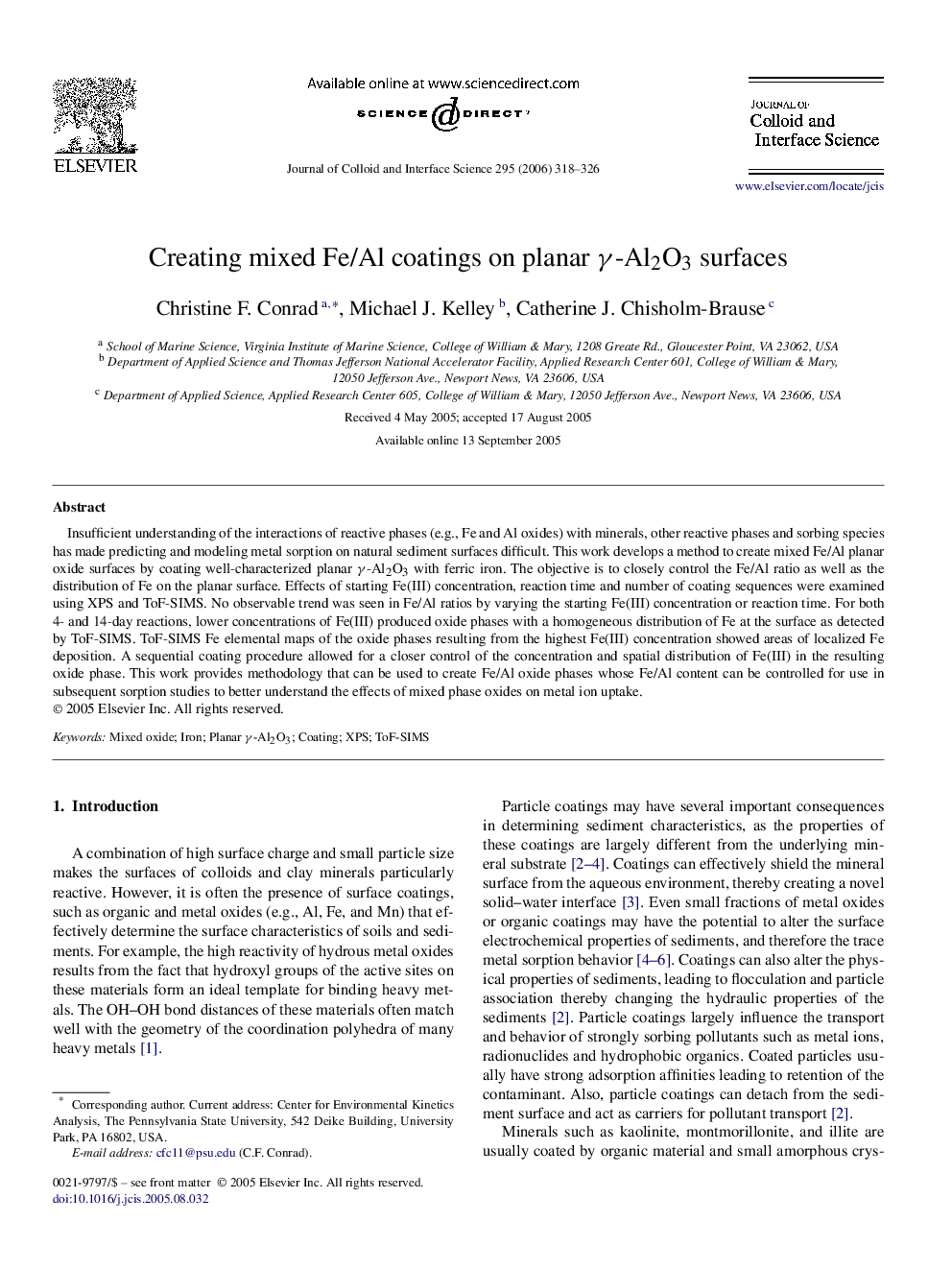| Article ID | Journal | Published Year | Pages | File Type |
|---|---|---|---|---|
| 613813 | Journal of Colloid and Interface Science | 2006 | 9 Pages |
Abstract
Insufficient understanding of the interactions of reactive phases (e.g., Fe and Al oxides) with minerals, other reactive phases and sorbing species has made predicting and modeling metal sorption on natural sediment surfaces difficult. This work develops a method to create mixed Fe/Al planar oxide surfaces by coating well-characterized planar γ-Al2O3 with ferric iron. The objective is to closely control the Fe/Al ratio as well as the distribution of Fe on the planar surface. Effects of starting Fe(III) concentration, reaction time and number of coating sequences were examined using XPS and ToF-SIMS. No observable trend was seen in Fe/Al ratios by varying the starting Fe(III) concentration or reaction time. For both 4- and 14-day reactions, lower concentrations of Fe(III) produced oxide phases with a homogeneous distribution of Fe at the surface as detected by ToF-SIMS. ToF-SIMS Fe elemental maps of the oxide phases resulting from the highest Fe(III) concentration showed areas of localized Fe deposition. A sequential coating procedure allowed for a closer control of the concentration and spatial distribution of Fe(III) in the resulting oxide phase. This work provides methodology that can be used to create Fe/Al oxide phases whose Fe/Al content can be controlled for use in subsequent sorption studies to better understand the effects of mixed phase oxides on metal ion uptake.
Keywords
Related Topics
Physical Sciences and Engineering
Chemical Engineering
Colloid and Surface Chemistry
Authors
Christine F. Conrad, Michael J. Kelley, Catherine J. Chisholm-Brause,
